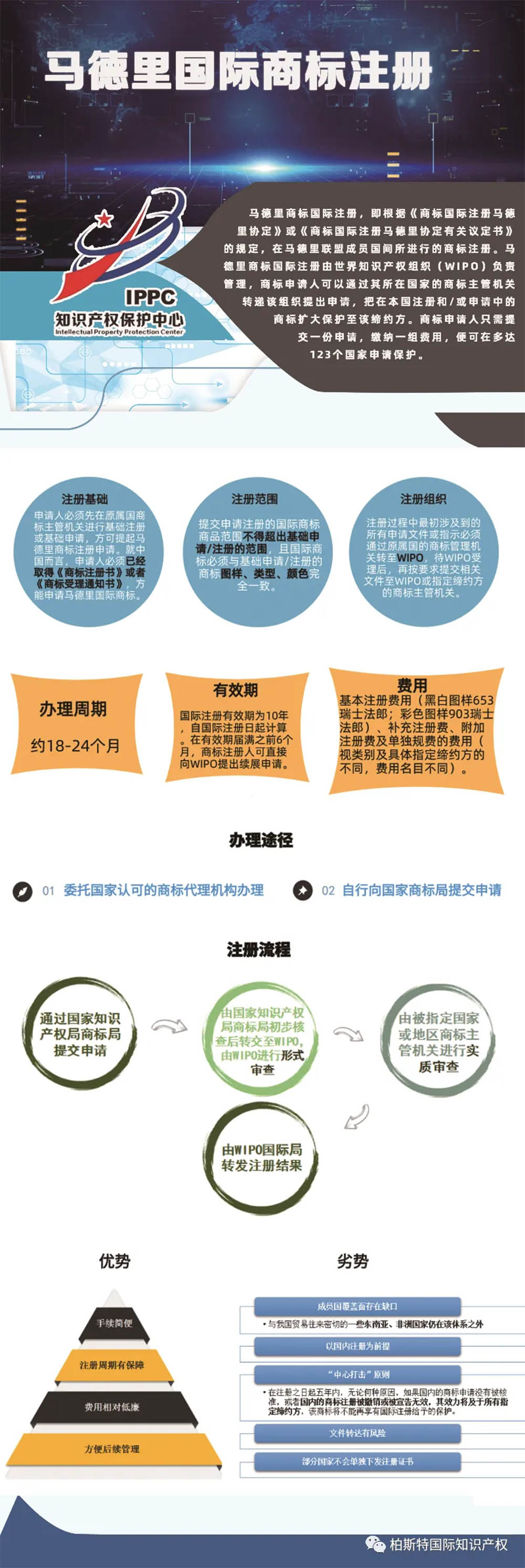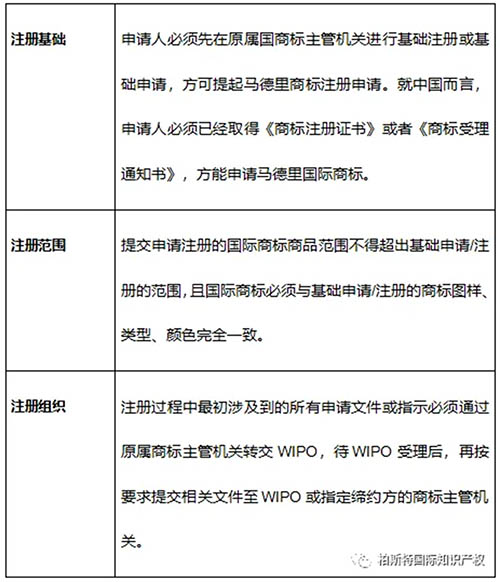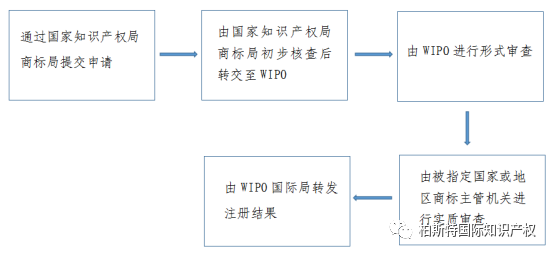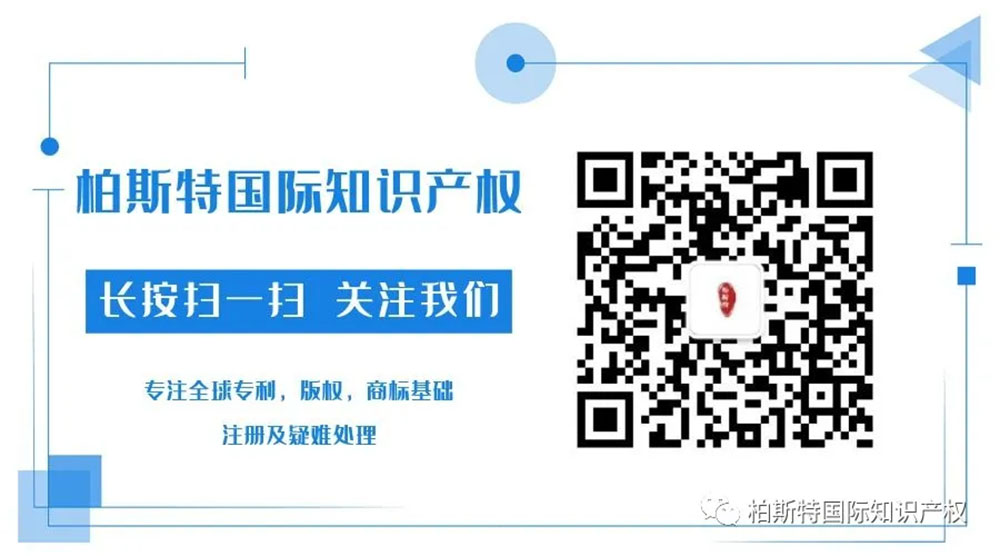- Knowledge

Analysis Report on Madrid International Trademark Registration
In recent years, the international competitiveness of Chinese enterprises has been continuously enhanced, and Chinese brands have attracted much attention in the international market. Shenzhen has developed an outward oriented economy, and more and more "Shenzhen brands" are going global. Many "going global" enterprises face brand layout barriers such as trademark registration when participating in international market competition. For enterprises, completing overseas trademark registration before expanding into overseas markets is a crucial step in successfully developing overseas markets. Madrid International Trademark Registration is known as the "fast lane" for overseas trademark registration, and has become the choice for many enterprises to complete overseas trademark registration due to its advantages of time-saving, labor-saving, and cost saving. This report mainly analyzes the overview, advantages and disadvantages, processing methods and registration process of Madrid International Trademark Registration from three aspects, for reference by the bureau leaders, relevant departments and related enterprises:
01Overview of Madrid International Trademark Registration
(1) Concept
Madrid International Trademark Registration refers to the registration of trademarks between member states of the Madrid Union in accordance with the provisions of the Madrid Agreement on the International Registration of Marks or the relevant protocols of the Madrid Agreement on the International Registration of Marks. The international registration of Madrid trademarks is managed by the World Intellectual Property Organization (WIPO), and trademark applicants can forward their applications to the organization through the trademark authority of their country, expanding the protection of trademarks registered and/or applied for in their own country to that contracting party. Trademark applicants only need to submit one application and pay one set of fees to apply for protection in up to 123 countries.
(2) Registration requirements
(3) Processing cycle
Within approximately 6 months from the date of submission of the application for international registration of a trademark by the applicant, if there are no matters requiring correction, the WIPO International Bureau will issue a certificate of international registration of the trademark. Within 12-18 months from the international registration date stated on the certificate, if the trademark authority of the designated contracting party does not issue a notice of rejection or extension of examination period to the WIPO International Bureau, the trademark will automatically be protected in the designated contracting party.
(4) Validity period
The validity period of international registration is 10 years, calculated from the date of international registration. Six months before the expiration of the validity period, the International Bureau of WIPO will informally notify the trademark registrant of the renewal matters (including the expiration date), and the trademark registrant can directly apply for renewal to WIPO. If the trademark registrant fails to apply for renewal before the expiration date, the WIPO International Bureau will grant a six-month grace period. If no renewal is applied for during the grace period, the International Bureau of WIPO will cancel the international registration. For those who apply within the above-mentioned period, the validity period of the trademark international registration can be extended for 10 years.
(5) Cost
For most countries, the overall cost of international trademark registration in Madrid is usually lower than the cost of registering through a single country. The registration fee usually includes the following parts: basic registration fee (653 Swiss francs for black and white patterns and 903 Swiss francs for color patterns), supplementary registration fee, additional registration fee, and separate fee (depending on the category and specific designated contracting party, the cost items may vary). Generally speaking, whether designating one or all member states, applicants for Madrid International Trademark Registration only need to pay one basic registration fee, so the more countries they apply for, the more cost-effective it is.
02Advantages and disadvantages of Madrid International Trademark Registration
Madrid International Trademark Registration has the advantages of saving time, effort, and money, and is therefore known as the "fast lane" for companies to register trademarks overseas. At the same time, Madrid International Trademark Registration also has certain disadvantages. The following will analyze the main advantages and disadvantages of Madrid International Trademark Registration. It is recommended that trademark applicants weigh the pros and cons based on their actual situation and make an objective trademark registration choice.
(1) Advantages of Madrid International Trademark Registration
1. Convenient procedures
The simplicity of application procedures is an important advantage of Madrid International Trademark Registration. Trademark applicants only need to use one language, submit an application to the competent authority in China, pay one fee, and designate multiple contracting states to apply for protection.
2. The registration period is guaranteed
As mentioned earlier, it takes approximately 2 years to apply for trademark protection from a designated contracting party through Madrid International Trademark Registration. If a single country registration method is used, the application registration cycle for some countries and regions can be as short as 3-6 months, but some may take several years. It can be seen that the time and cycle of Madrid international trademark registration are more predictable.
3. Relatively low cost
For trademark applicants who apply for trademark protection in multiple countries or regions overseas, applying for trademark protection through Madrid International Trademark Registration only requires payment of one fee, while applying for trademark protection through single country registration requires payment of registration fees to different countries one by one. It can be seen that the more countries that apply, the more obvious the price advantage of Madrid International Trademark Registration.
4. Facilitating subsequent management
For trademark applicants who apply for trademark protection in multiple countries or regions overseas, they can directly handle transfer, renewal, and cancellation applications from multiple contracting parties through WIPO, and the change of name/address can be extended to all contracting parties through one change. It can be seen that compared to trademarks applied for through a single channel, the subsequent management of Madrid International Trademarks is more convenient.
(2) Disadvantages of Madrid International Trademark Registration
1. There is a gap in the coverage of member states
At present, 123 countries have joined the Madrid System, including some major countries in China's foreign trade, such as the United States, Japan, and most member states of the European Union. However, it is worth noting that a large number of Asian, African, and Latin American countries have not yet joined the Madrid System, especially some Southeast Asian and African countries that have close trade relations with China are still outside the system. Therefore, if the trademark applicant plans to obtain trademark protection in these countries, it is still not possible to achieve it through Madrid International Trademark Registration.
2. Based on domestic registration as a prerequisite
The applicant for Madrid International Trademark Registration must file an application with WIPO based on a trademark that has already been applied for or registered in the country of origin. In other words, Madrid trademark registration must be based on domestic trademark registration or domestic trademark registration application. In contrast, most single country registrations do not have the above restrictions, and overseas applications can be submitted regardless of whether there is a domestic application or registration.
3. The principle of "center strike"
The principle of "center strike" refers to the situation where a trademark registered through the Madrid system, within five years from the date of registration, for any reason, if the domestic trademark application is not approved, or if the domestic trademark registration is revoked or declared invalid, its effectiveness will extend to all designated contracting parties, and the trademark will no longer enjoy the protection provided by international registration. From this, it can be seen that if a "central crackdown" occurs, the losses of the trademark applicant will be enormous. If the stability of the basic registration rights cannot be guaranteed, the economic and time costs of subsequent remedies will be much greater than the Madrid International Trademark Registration itself. In practice, the risks implied by this principle have also become a psychological barrier for many applicants with international trademark registration needs.
4. There are risks associated with document transmission
The documents for Madrid international registration application need to be conveyed through multiple organizations and processes, which increases the risk of document loss. In the early stage of the Madrid registration application, the documents are transferred from the trademark authority of the country of origin to the WIPO International Bureau, which then forwards them to the designated contracting party; In the substantive examination stage, if there is a rejection or objection, the relevant documents shall be transferred by the designated contracting party to the WIPO International Bureau, and then conveyed to the agency or trademark applicant, which may result in loss of mail and invalidation; After the designated contracting party is protected, the designated contracting party may directly mail the relevant notices of revocation, invalidity, etc. to the trademark applicant without notifying the designated agency, which can also easily result in document loss and render the previously protected trademark invalid.
5. Some countries do not issue registration certificates separately
According to the relevant provisions of the agreement and protocol, if WIPO does not receive a notice of rejection from the designated contracting party within 12 or 18 months after the international registration enters the designated contracting party examination stage, the application of the designated contracting party shall be deemed to have been approved for registration. For applications that are approved for registration by default, currently only a few countries issue registration certificates or proofs separately, and most countries do not notify separately. Therefore, if exercising trademark registration rights in these countries, it is necessary to apply for registration proof documents from the designated contracting party.
03The process and procedures for handling international trademark registration in Madrid, China
(1) Application process
1. Entrust a nationally recognized trademark agency to handle it
Trademark applicants can entrust any nationally recognized filing agency to handle Madrid International Trademark Registration. All the names of trademark agencies registered by the Trademark Office of the China National Intellectual Property Administration (hereinafter referred to as the "State Trademark Office") are published in the "Trademark Agency" column on the official website of the State Trademark Office.
2. Submit an application to the National Trademark Office on your own
Trademark applicants can also submit a Madrid international trademark registration application to the National Trademark Office on their own and follow the following steps: prepare application materials → submit the application to the International Registry of the National Trademark Office through online or paper application → pay the registration fee according to the provisions of the "Notice of Fees for International Trademark Registration" → obtain the international registration certificate.
(2) Registration process
The international trademark registration process in Madrid, China is divided into the following five stages:

1. Submit an application through the National Trademark Office
The applicant must first file a basic registration or basic application with the National Trademark Office before submitting an application for Madrid International Trademark Registration. After obtaining domestic trademark registration, the applicant needs to fill out the international trademark registration application materials to designate the Madrid System member country that intends to seek trademark protection, and submit the relevant application to the national trademark office.
2. After preliminary verification by the National Trademark Office, it will be transferred to WIPO
The National Trademark Office will conduct preliminary verification of international registration applications. If the examination fails, the applicant may be required to make corrections or may not be accepted. After the examination is approved, the application will be transferred to WIPO.
3. Formal examination by WIPO
The examination of international applications by WIPO is a formal examination, and if the examination fails, relevant notices of correction will usually be issued; After the examination is approved, the WIPO International Bureau will issue an international registration certificate (indicating the international registration number and date) and publish it in the WIPO International Trademark Bulletin.
4. Conduct substantive examination by the designated national or regional trademark authority
The trademark authority of the designated country or region will conduct substantive examination and make a decision on the international registration application in accordance with the laws of the country within the prescribed time limit. In practice, if a trademark applicant submits an application to multiple member states and one designated country rejects the trademark registration application in whole or in part, this decision does not affect the decisions of other designated countries or regions.
5. Forwarding of registration results by the International Bureau of WIPO
After substantive examination by the trademark authorities of designated countries or regions in accordance with their own trademark laws and regulations, the relevant approval registration or rejection applications will be notified to the WIPO International Bureau within the rejection period, and the WIPO International Bureau will forward the trademark applicant after registration.
END

Some of the materials in the article are sourced from the internet. If there is any infringement or any questions about copyright, please contact: monica@yfzcip.com We will handle it promptly!




